Woodhouse's Toad in a Slickrock Pool
On 29th of July, 2022, I was out roaming in Southeastern Utah. Our Summer monsoon rains had started a few weeks earlier, and I was hoping to find Spadefoot Toads. As I walked along a broad slickrock drainage, I found…
On 29th of July, 2022, I was out roaming in Southeastern Utah. Our Summer monsoon rains had started a few weeks earlier, and I was hoping to find Spadefoot Toads.
As I walked along a broad slickrock drainage, I found some isolated pools of water - tinajas.
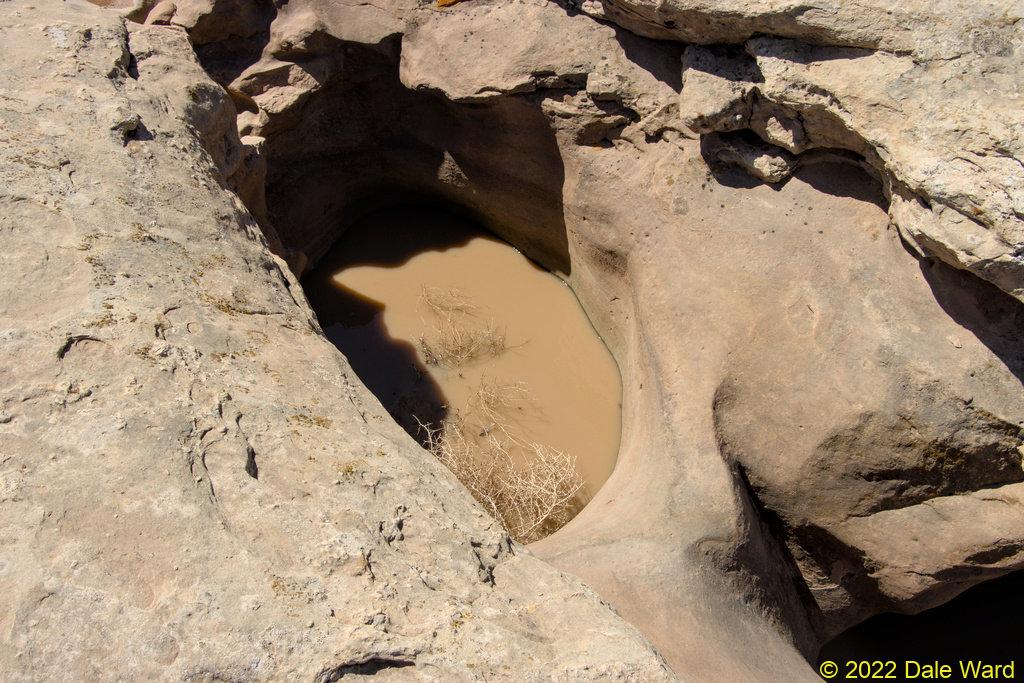 A slickrock pool. It was about 3 feet across and 6 feet long, the sheer sides were about 2 feet to the surface of the water.
A slickrock pool. It was about 3 feet across and 6 feet long, the sheer sides were about 2 feet to the surface of the water.
And…I also saw that the pools were alive with Tadpoles. Success!
I stopped by one pool that was about half-full of muddy water. It was about six feet long, and perhaps four feet across. There was about a two-foot sheer wall of sandstone around the edge of the pool. It might have been full at one point, then dried, or it may never have filled up all the way.
As I looked into the pool, I saw the spider-legs of Waterstriders skimming across the muddy water…and a muddy snout bobbing up and down, and rubbery fingers scrabbling at the vertical sandstone.
What on earth…?
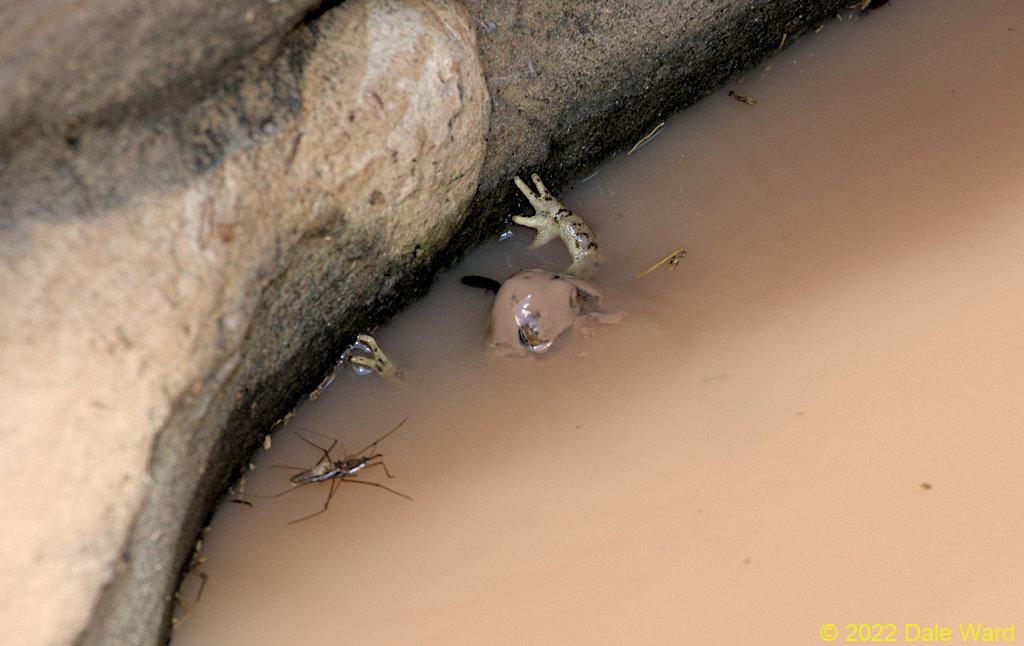 I could see a muddy snout and a pair of hands sticking out of the water in the slickrock pool.
I could see a muddy snout and a pair of hands sticking out of the water in the slickrock pool.
I lay there, peering down into the pool, and eventually got a better look at the creature. It was a Woodhouse’s Toad (Anaxyrus woodhousii).
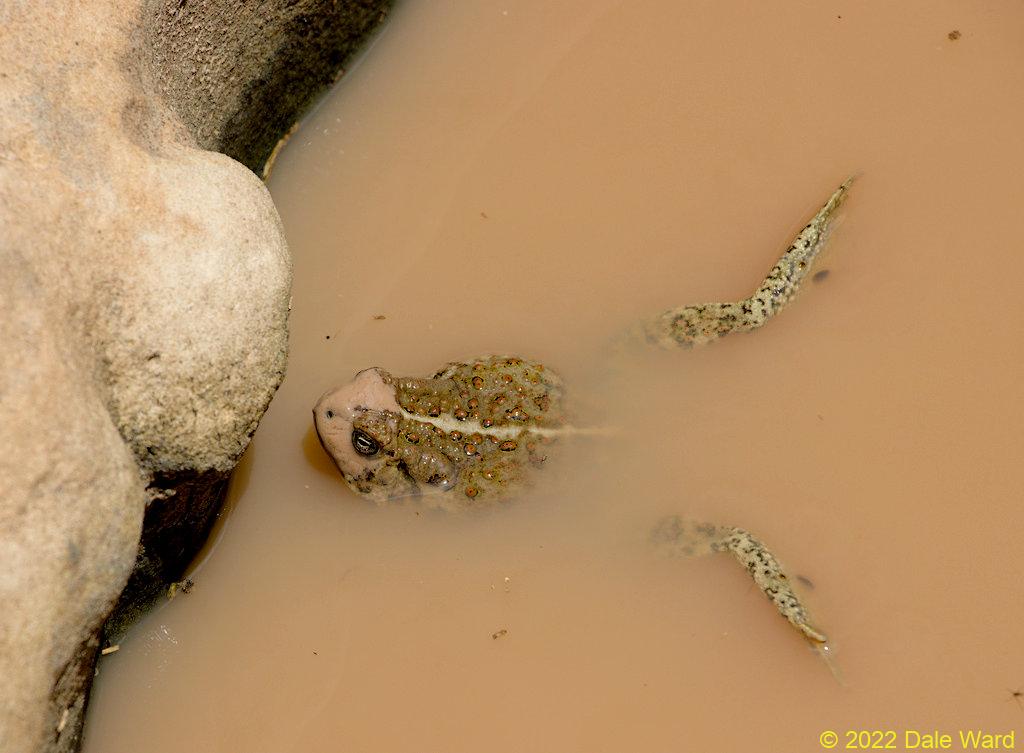 Woodhouse’s Toad, floating on the surface of the slickrock pool
Woodhouse’s Toad, floating on the surface of the slickrock pool
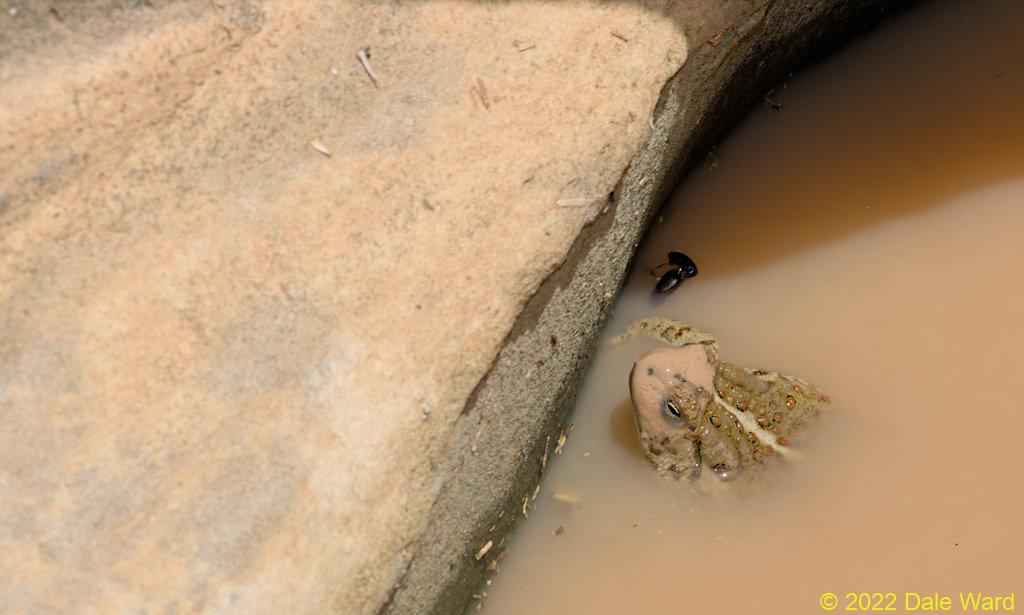 Woodhouse’s Toad in the slickrock pool.
Woodhouse’s Toad in the slickrock pool.
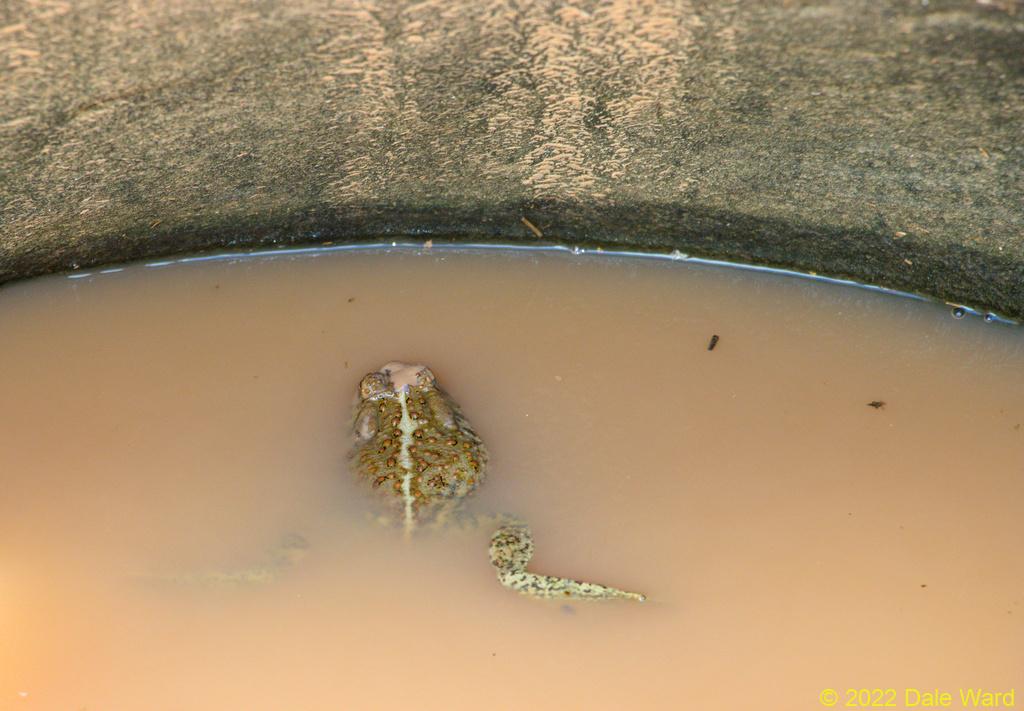 Woodhouse’s Toad, facing the nearly vertical sandstone wall of the pool
Woodhouse’s Toad, facing the nearly vertical sandstone wall of the pool
The Toad would disappear beneath the water for a minute or so, then reappear at the surface, scrabble against the side of the pool, then rest for a while. It seemed to be looking for a way out.
What should I do? Should I do anything? I wasn’t sure if we were going to get more rain this Summer. If not, the Toad would either drown, get eaten, or desiccate when the tinaja inevitably dried.
The next time time the Toad worked its way over to my side of the pool, I laid on the sandstone and reached into the pool, and scooped the Toad out.
The Toad immediately took on a hunched position, with its eyes half-closed. It felt cold, rubbery, artificial.
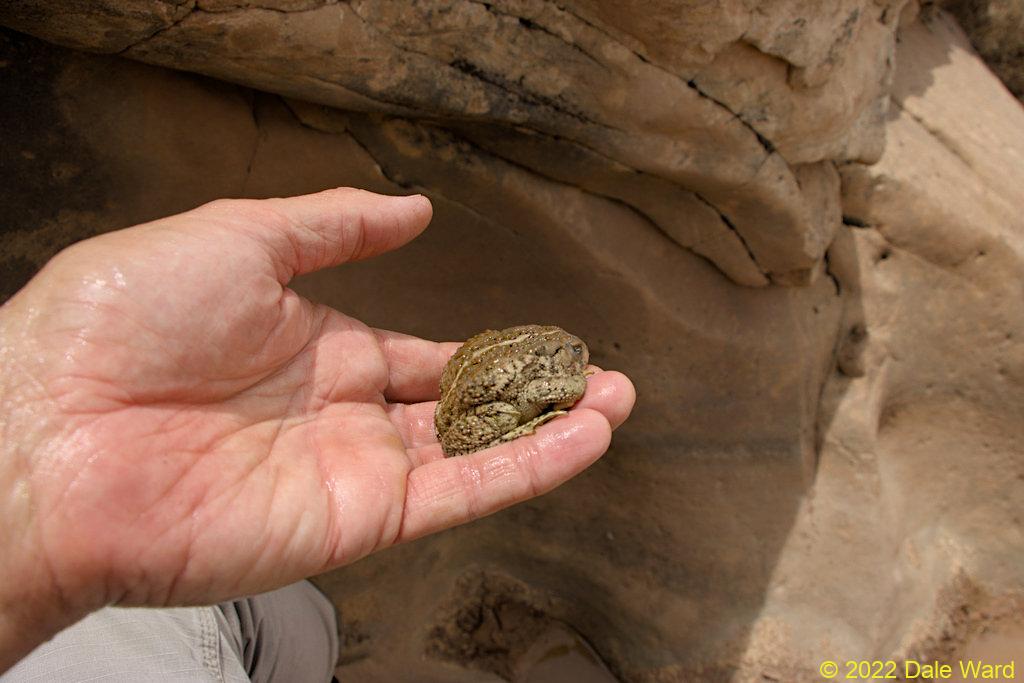 After I scooped it from the pool, the Toad froze - tucking its legs in and hunching its back.
After I scooped it from the pool, the Toad froze - tucking its legs in and hunching its back.
This was a defensive posture. Thr Toad was playing dead while curving its back to expose its parotid glands - the big lumps behind its head - towards predators. Towards me, in this case.
The parotid glands secrete bufotoxin - a mix of poisons which can produce nausea, irregular heartbeat, mucous membrane irritation, and hallucinations.
I reminded myself not to bite the Toad.
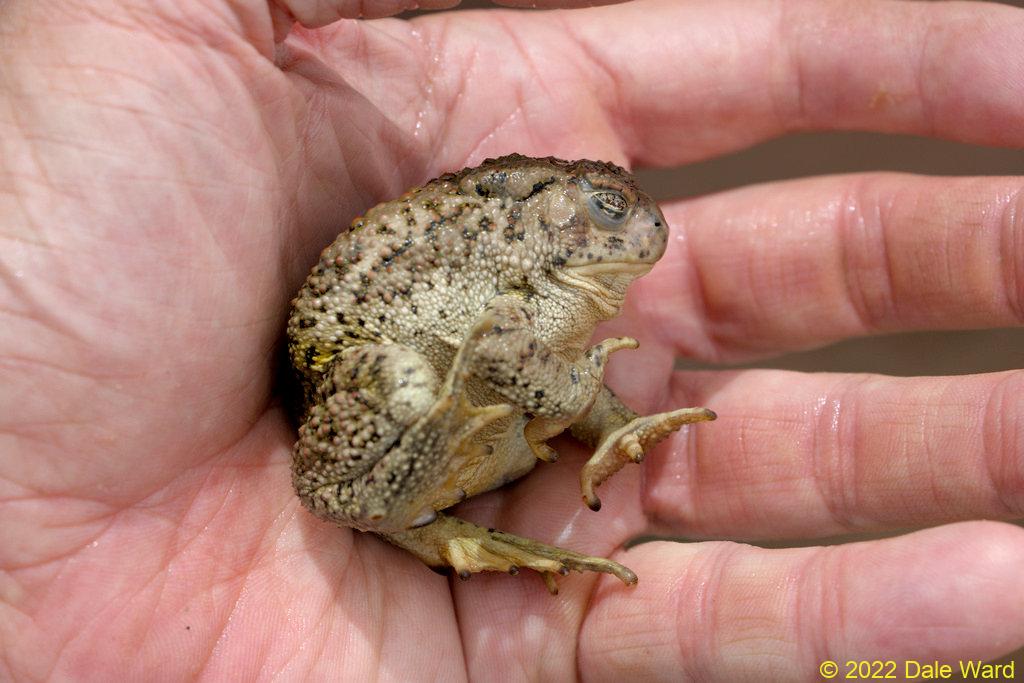 The Woodhouse’s Toad took on a defensive posture, hunching its back and half closing its eyes.
The Woodhouse’s Toad took on a defensive posture, hunching its back and half closing its eyes.
The Toad stayed in this hunched posture as I turned it over in my hand. Just a beautiful creature.
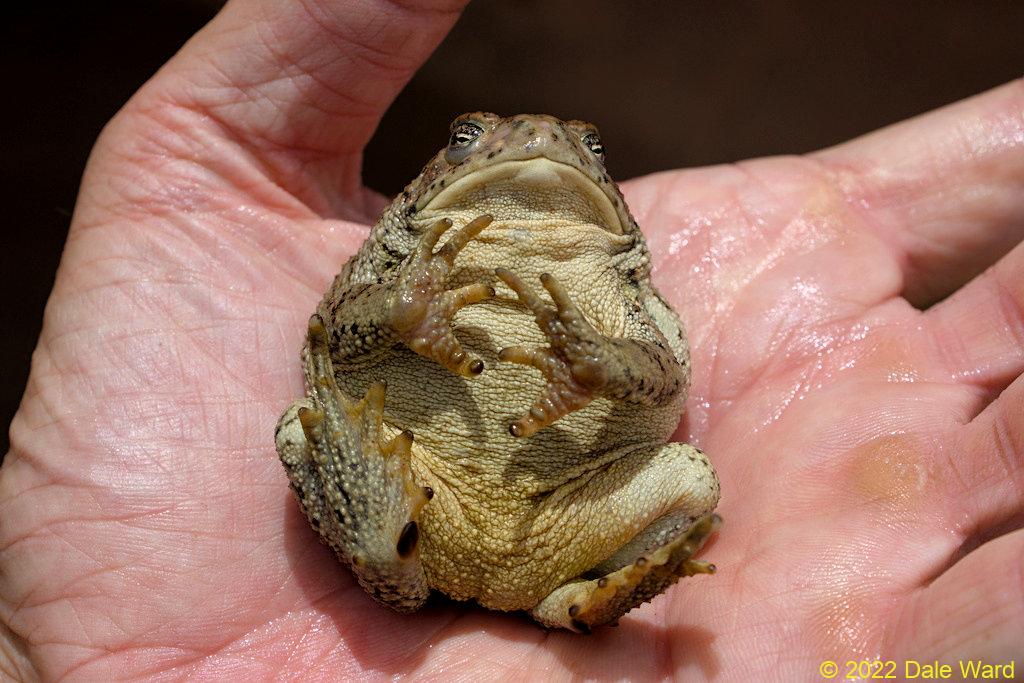 The Toad stayed frozen in a hunched position.
The Toad stayed frozen in a hunched position.
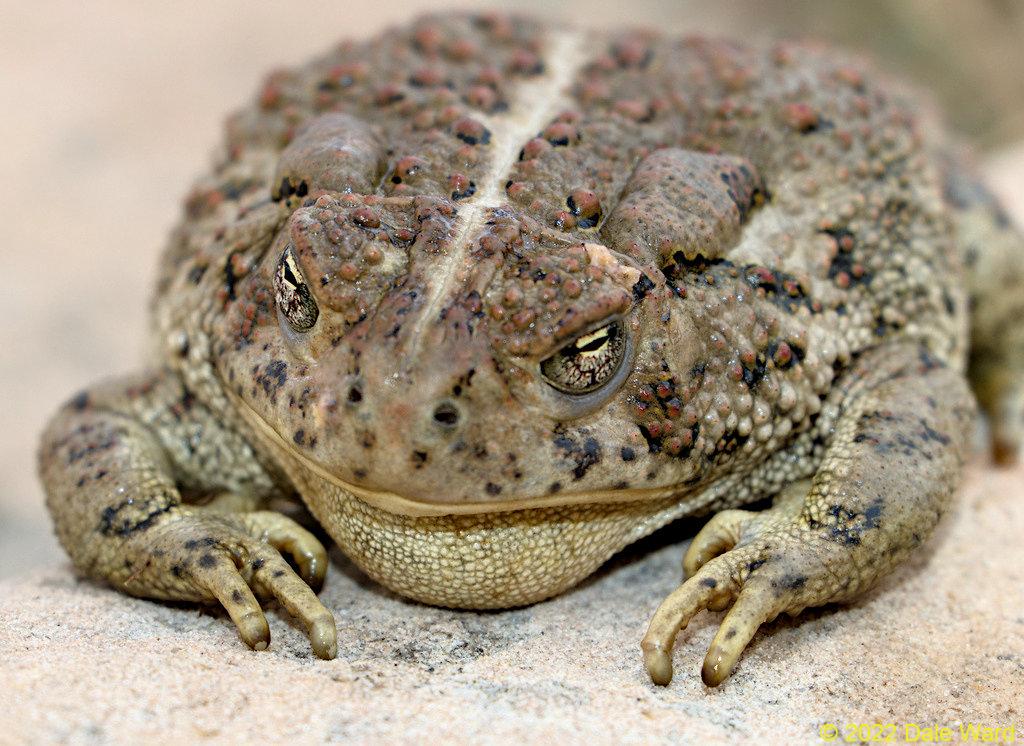 Woodhouse’s Toad looks into the camera
Woodhouse’s Toad looks into the camera
I let the Toad go into a a pool just below its steep-walled pool. It was near enough that I figured it could get back into the original pool if it wanted to do so.
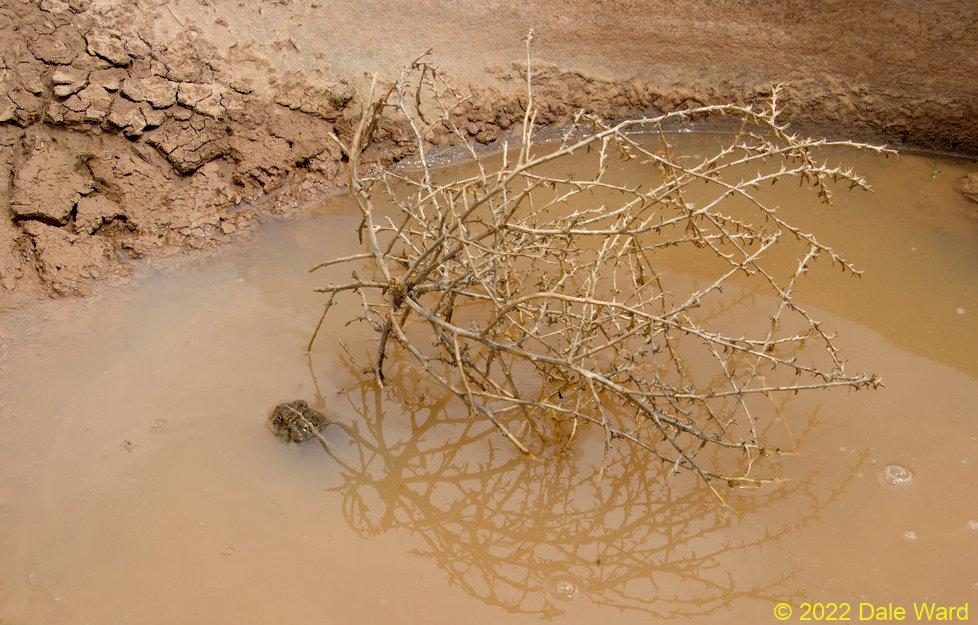 Woodhouse’s Toad resting in its new pool, just a little downstream.
Woodhouse’s Toad resting in its new pool, just a little downstream.
An update - a couple of weeks later I revisited the same series of pools. The rains had come, and the pools were full again. Come to find out, I could have just left the Toad alone and it would have been fine.